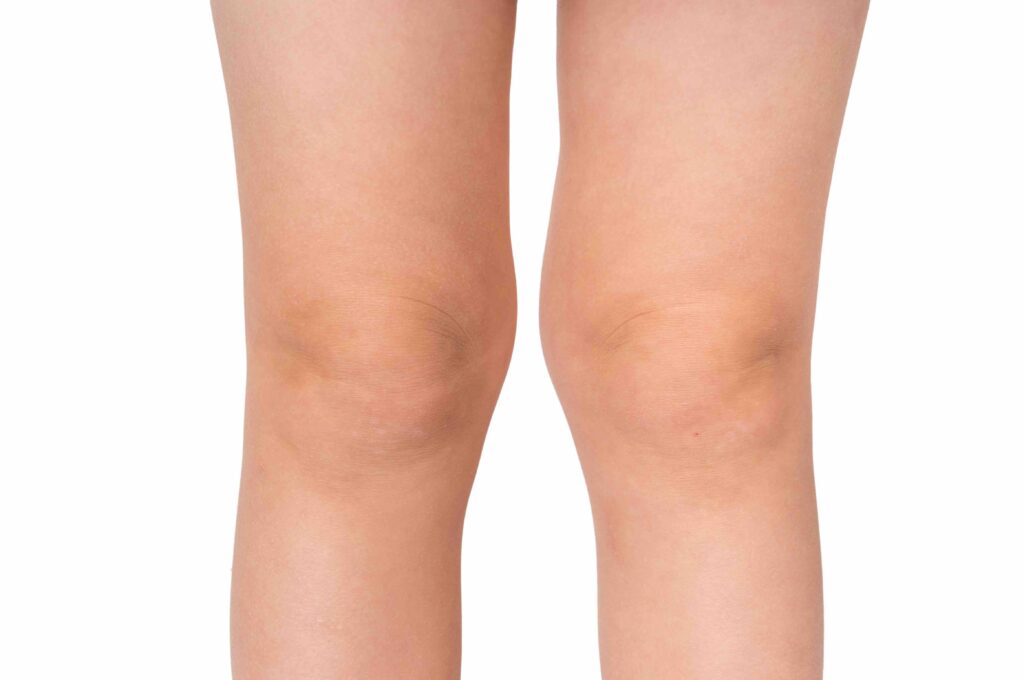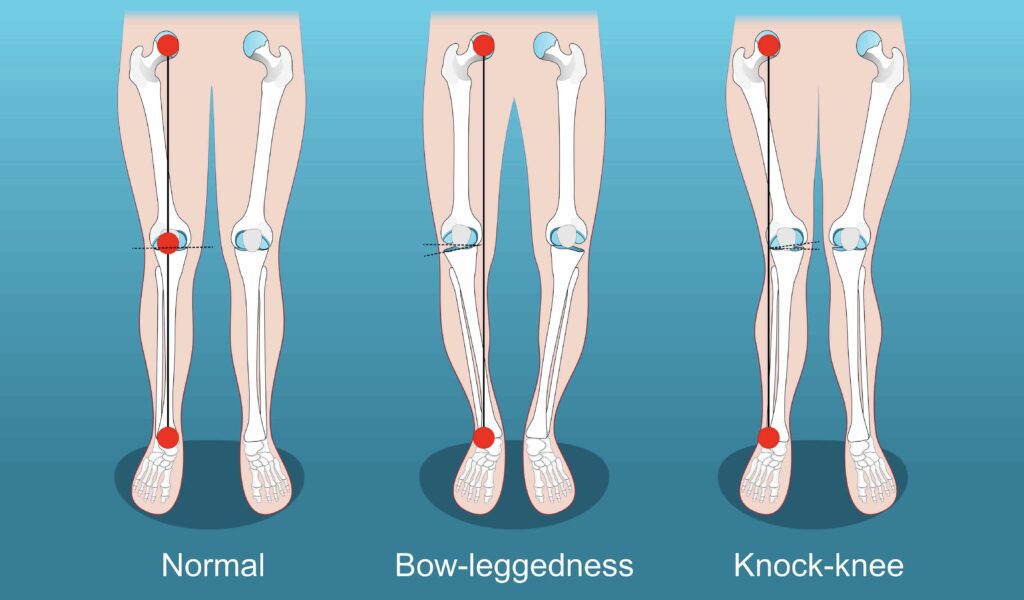Knee pain is on the rise. Over 100,000 of us receive knee replacements every year! So what is causing this knee pain, and does weight have anything to do with knee pain.
Why do we get knee pain?
Let’s look at the main causes of knee pain in order to answer this question. The knee is a relatively simple joint, it is known as a hinge joint, because it provides a hinge like movement, joining the upper and lower legs and allowing us to bend so we can walk, sit and stand.
However the joint relies on alignment, it likes to be straight. If the forces of muscles, and other joints cause it to twist or rotate, over time this causes pain and eventually damage. The picture on the left shows a straight knee the left knee as we are looking at tit and a knee that is not straight on the right.

What causes knee alignment to change?
The key reasons for knees to start to move away from a straight position are foot strength. We have written about this before, but when your foot is weak it causes the knee to drop in and this changes the angle of the knee.
If you have a weak foot, perhaps you have a bunion, or know you have flat feet, this is a good place to start when looking at how to fix your knee pain. This is by far the most common reason for knee pain, even if you are over weight.
Another reason for knee alignment to change is due to muscle density and firing patterns around the knee. If the outside of your knee works harder than the inside, this will affect the position of your patella or kneecap and over time create pain and damage to the underside of the kneecap.
So what about weight?
Weight in itself doesn’t create problems for knees, however, as we gain weight our legs get bigger. Larger people can’t put their heels together, for example, as their upper legs are too large to allow this to happen. As a result, this changes something called your Q-angle.
In the picture below you can see what happens if the legs become bowed due to an increased upper leg size. The angle of the knee changes and this can cause damage to the knees over time.

What can be done about large legs?
If the mass of the leg is the issue, then fat loss and muscle toning is your only solution. Walking is a great way to loose fat from the body, so walking for an hour at least 3-4 times a week would be a great start.
We can also give strengthening exercises to try to realign the patella (knee cap) and strengthen the feet, to help to reposition the legs. This is a good solution if you only have mild weight gain in this area.
So, in conclusion, weight gain can affect the health of your knees, but it tends to be only in excessive cases. In most cases we can realign the knee with strengthening exercises to reduce or remove your pain.
For more information on how we can help you with your knee pain, take a look at here.
For help with weight loss take a look at this NHS page.